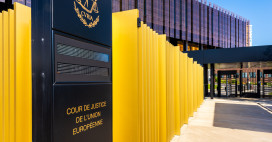
This post was written by Isabel Roby, Fair Trials Legal and Policy Officer focusing on Latin America
Custody hearings are a fundamental pillar of torture prevention. In Brazil, they were instituted in 2015 by the National Council of Justice (CNJ). During a custody hearing, the judge will determine the legality of the arrest, decide on pre-trial detention or other precautionary measures and, very importantly, will hear claims of torture. The detained person must be accompanied by a lawyer (whether a private lawyer or a public defender).
A study launched in 2017 by IDDD in partnership with the CNJ, collected information in nine Brazilian states1 about the implementation and effects of custody hearings. The study found that physically seeing and hearing the arrested person actively helps to bring justice operators closer to the reality of people in custody.2
In 2019, IDDD published another study3 after analysing more than 3,000 cases in 13 different Brazilian cities.4 The results showed that 23.8% of detainees confirmed to have been subjected to police violence during their arrests. However, in 96% of the cases, such statements were made in the presence of law enforcement agents which can be intimidating to the person in custody, who might then choose to remain silent for fear of reprisals.
Similarly, a 2019 study tilted: MulhereSemPrisão: enfrentando a (in)visibilidade das mulheres submetidas à justiça criminal by Instituto Terra, Trabalho e Cidadania (ITTC) shows how violence suffered by women is ignored and naturalized by the criminal justice system, even when investigations are opened against the alleged aggressors. Moreover, the study shows how the historical conditions of inequality faced by afro-descendant women are particularly obvious in the criminal justice system where there is a production of punishable individuals based on the intersection of gender, race, and socio-economic background.6 The study further shows that the implementation of custody hearings confirmed what was already known, that Brazil s criminal justice system is structurally racist, and its main targets are afro descendants from underserved communities.
According to a study by the Public Defender s Office of Rio de Janeiro which marked five years since the implementation of custody hearings, 77.4% of detained people presented in the hearings between September 2017 and September 2019, identified themselves as afro-descendants. Additionally, 38.3% of detainees reported having suffered torture or ill-treatment at the time of arrest and, considering the rate of aggression by colour / race, about 80% of them were perpetrated against afro-descendant people.7 That means that almost 80% of the people arrested in flagrante were afro-descendant, and approximately 80% of the aggressions in custody hearings were reported by afro-descendant people.
Similarly, a survey by the Public Defender s Office of the State of Bahia (a state with a large afro-descendant population) gathering data from 2019 pointed out that 97.8% of the people presented in custody hearings declared themselves as afro-descendant, and 91.7% of the reported aggressions were suffered by afro-descendant people.8
The gender and racial composition of the judiciary in Brazil is also problematic, and it shows the structural foundations of the problem:9 Male judges represent 62% of the judiciary, while female judges only represent the 38% (CNJ 2018). Moreover, white judges represent 82% of the entire judicial system and only 18.1% are afro descendants. In Sao Paulo (one of the most representative districts with the larger prison population) 86% of judges are male and 92% of judges are white, only 5% were afro descendants.
The practice of presenting an arrested person before a judge during the first hours of detention has the potential to prevent torture and ill-treatment, custody hearings offer criminal judges an opportunity to spot any signs of torture, ill-treatment, or abuse. However, a selective criminal justice system mirrors the structural racism of Brazilian society, unjustly and unequally targeting young, afro-descendant, and poor people with little access to justice. If held by video-conference (as is currently happening due to the Coronavirus pandemic), the custody hearing loses two of its primary purposes, to safeguard and guarantee the rights of the detained person, and to effectively prevent ill-treatment and torture.
Detained people are now more vulnerable to becoming victimized by institutional violence. The early stages of detention are, without a doubt, the most important moments for the prevention of torture. While in some proceedings, the use of remote technology can be useful, we are concerned about its applicability in custody hearings, which are designed in large part to identify whether arrested individuals have been tortured. Detection of torture is greatly aided by the physical presentation of the arrested person before an independent defence lawyer and a judicial authority, as well as by in-person access to an independent medical examination. All of this is rendered impossible with remote custody hearings.
Recently, more than 60 human rights orgs including IDDD sent an appeal to the Interamerican Commission denouncing the decision of the CNJ that authorised the use of video conferences in custody hearings.
Footnotes:
1 Bahia, Cear√°, Pernambuco, Federal District, Rio Grande do Norte, Minas Gerais, Rio Grande do Sul, Paran√° and Rio de Janeiro.
2 http://www.iddd.org.br/wp-content/uploads/2017/12/Audiencias-de-Custodia_Panorama-Nacional_Relatorio.pdf 3 https://iddd.org.br/wp-content/uploads/2020/07/SumExecutivo_web_simples.pdf
4 Alagoas, Bahia, Distrito Federal, Minas Gerais, Paran√°, Pernambuco, Rio de Janeiro, Rio Grande do Sul and S√£o Paulo.
6 http://www.scielo.org.co/pdf/recs/n21/2011-0324-recs-21-00097.pdf
7 https://defensoria.rj.def.br/uploads/arquivos/0b6d8d161c1b41739e7fc20cca0c1e39.pdf
8 https://iddd.org.br/wp-content/uploads/2020/07/SumExecutivo_web_simples.pdf
9 ibid., page 131-133


